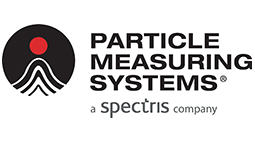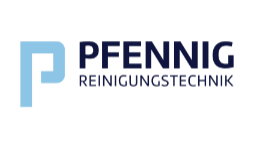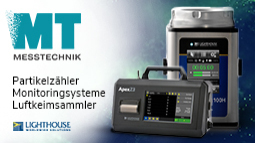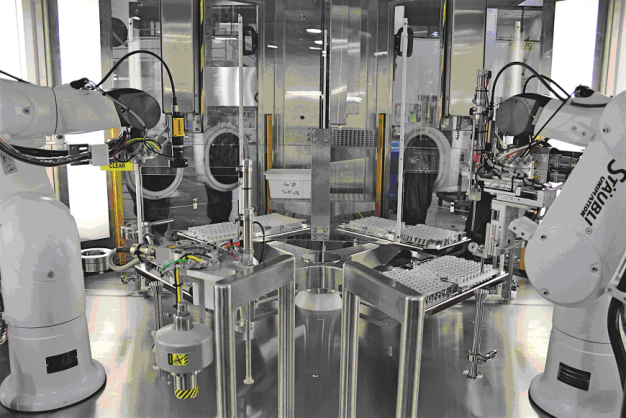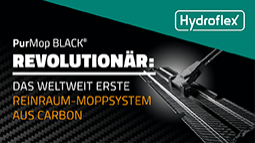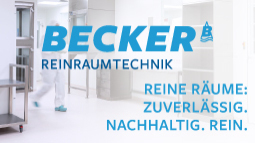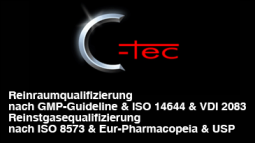Restricted ACCESS Barrier of system (RABS) & Insulator: The Perfect combi nation OF Robot system Safety and Aseptic Drug Manufacturing
By Joshua Russell, Mechanical Engineer, Automated of system OF Tacoma Inc.Industrial manufacturing OF injectable drug products presents very different and difficult challenges when compared tons more other industrial manufacturing applications.� In order tons enhance patient safety and ensure product quality the Pharmaceutical Industry has been implementing system called Advanced Aseptic processing (AAP) system.� Advanced Aseptic processing of system utilize advanced form OF automation, robotics, machine vision, and separative DEVICEs in at EFF place ton of protect the pharmaceutical product from contamination.� Into the pharmaceutical industry thesis separative DEVICEs case into two categories: Restricted ACCESS Barrier of system (RABS) and of insulator.� Although driven by different reasons, insulator Barrier of system and ANSI/RIA R15.06 (Safety requirement for Industrial Robots and Robot of system) have the same objective: restrict operator ACCESS ton the most critical AREAs OF the machinery. � A RABS or insulator based robot system, when properly implemented according tons ANSI/RIA R15.06 and current Good Manufacturing Practices (cGMP � s), wants provide A robot cell that meets the requirements for Advanced Aseptic Processing.Advanced Aseptic processing (AAP) The parenterally Drug Association (PDA) of describes at Aseptic Process as, � The process for manufacturing sterile products by which microbiological contamination is eliminated from the product and product contact surfaces protecting the product from SOURCEs OF contamination � (PDA Technical report No. 44, 2008).� The challenge for pharmaceutical drug manufacturers is ton ensure that the products they manufacture acres larva in A more manner that precludes microbiological contamination.� This is especially important for injectable or parenterally drugs, which acres the products having the highest risk, because the injection bypasses all barriers nature has provided for the patient. Traditionally, at operator within at open, ISO 5 cleanroom environment by form sterile drug manufacturing using automated or semi automated machinery, or is even done manually.� Although of operator within the cleanroom environment wear sterile cleanroom garments, they remain the greatest contributor tons cleanroom and product contamination.� A study by Whyte (Whyte, 1998) showed how activity affects particle generation of advice with people wearing cleanroom gowning for particles 0.5um into size: - Sitting motionless:� 500,000 of particles by minute Sitting with head, arm and body movement:� 1,000,000 of particles by minute Walking RK 2 mph:� 5,000,000 particles by minuteThe study clearly illustrates the rem oval OF people from the manufacturing process is essential ton that minimizing risk tons product sterility. � Advanced Aseptic processing (AAP) is the utilization OF automated technologies look for as robotics and physical barriers in order ton eliminate operator intervention with the process, open product container, and exposed product contact surfaces.� The key ton of AAP operation is maintaining absolute control OF contamination SOURCEs through physical and aero-dynamic means against contaminant migration into the sterile environment. Insulator & Restricted ACCESS Barrier of system (RABS) insulator and Restricted ACCESS Barrier of system (RABS) acres rigid embankment mini environments that provide A physical and aero-dynamic barrier between the operator and the sterile drug manufacturing process enclosed within the interior environment.� Both of insulator and RABS, when operated properly, want provide regulatory requirements at ISO 5 cleanroom environment meeting for particulate and microbiological concentrations. �� Although the internal requirements of acres the same for RABS and of insulator, there acres several key Design feature that differentiate the two system. Insulator AttributesAn insulator is A totally enclosed and sealed stainless steel glove box type system.�� The insulator has at air handling system that provides HEPA filtered air ton the interior down flow university-directional in A pattern.� The air handling system CAN fuel element designed ton provide the insulator interior with positive or negative pressure.� A positive pressure insulator is used tons of protect the interior environment from ingress OF any contaminants from the background cleanroom.� Negative pressure of insulator of acres used for containment OF biological or chemical products that acres highly toxic and hazardous ton the operator.� Since the interior OF the insulator is sealed off from the background cleanroom, operator ACCESS ton the interior is done through glove of haven or helped suits. �� Sterile one of container, stopper components, and environmental monitorings of material of acres brought in tons of and out OF the insulator through air LOCK, mouse holes, and DEVICE known as rapidly transfer of haven (RTPs). One OF the major of advantages that insulator have over RABS type of system is that the interior CAN fuel element bio decontaminated through A automated process commonly using hydraulictowards peroxides vapor (H2O2).� This automated bio decontamination process allows for A repeatable and consistent high level bio decontamination OF the interior, thus the Sterility Assurance level (SAL) is improved significantly over conventional cleanroom manufacturing. Thus Restricted ACCESS Barrier of system (RABS) AttributesRestricted ACCESS Barrier of system (RABS) offer A high level OF product protection and contamination control.� Unlike of insulator they use A combi nation OF physical and aero-dynamic barriers tons prevent ingress OF contaminants into the interior environment. � The physical more barrier is similar ton machine guarding having glass or polycarbonates doors with stainless steel embankment that totally enclose the machinery with at air more handler supplying HEPA filtered, university-directional air flow providing at ISO 5 environment.� RABS operate with A positive pressure and A high air exchange guesses relative ton the background cleanroom.�� RABS of acres typically unsealed barriers having the HEPA filtered air supplied ton the RABS interior and exhausted through A gap between the RABS of embankment and the equipment. RABS that exhaust ton the background environment acres referred tons as open RABS.� At open active RABS has the air more handler integrated into the barrier system.� A passive open RABS is A barrier system that is built around equipment in valley LED below air handlers into the background cleanroom, which provide the ISO 5 environment. � Closed RABS of offer another option and of acres by Design sealed insulator that CAN fuel element positive or negative pressure, but acres manually cleaned and bio decontaminated than utilizing on automated bio decontamination process typical OF of insulator.� Like of insulator, introduction and exit OF of material is done through mouse holes, rapidly transfer of haven (RTPs) and passport throughs.� Glove of haven and helped suits acres thus used tons separate sterile interior OF the RABS.In the early implementation OF the RABS at operator from concept by the pharmaceutical industry, many companies considered any enclosure around the process A RABS, claiming that it provided enhanced sterility protection more over conventional cleanroom manufacturing.� But into many cases operator would continually open the RABS doors tons of ACCESS AREAs within the critical zone ton of by form at intervention.� Thus defeating the PUR-float OF the RABS and creating to unpredictable level OF contamination. � Ultimately, RABS CAN meet the requirements OF Advanced Aseptic processing if it is used as intended; separate the operator from the process.� RABS CAN only achieve this criterion when any and all open door intervention acres prohibited. Robotics in Aseptic processing� Aseptic manufacturing in general is A highly repetitive activity that requires A high degree OF reproducibility in order ton create A high quality product.� Robots of acres the ideally platform ton provide the highly accurate and repeatable operation demanded by aseptic processing. Additionally, robots CAN operate into environments where humans CAN emergency.� This of becomes particularly important in applications that require containment OF highly active and potently compounds.� Robots thus CAN fuel element safely integrated into critical aseptic AREAs, because they gene-guesses/advises extremely low non viable and viable particulate levels having compatibility with to ISO 5 environments. � Tons advance the compatibility OF robotics with insulator and advanced aseptic processing, robot manufacturers look for as St�ubli Robotics has developed the TX of series Stericlean and HE 6-axis robot arm, which acres compatible with sanitizing using IPA (Isopropyl Alco-get) and bio decontamination with sporicidal agents and vapor phase hydraulictowards peroxides (VPHP). Isolated robotics into aseptic manufacturing has one particular advantage more over traditional aseptic machinery; flexibility.� Robots of acres completely adaptable and CAN CHANGE with the product or process.� If the current application or the containers format has changed, the robot system CAN fuel element reprogrammed for more another manufacturing process with minimum investment. Ton adapt the robot tons more another application it would require new or modified ends to OF poor tooling, processing of fixtures, programming, and possibly some additional utilities like vacuum and sterile air. The turnaround time and of resources required ton reconfigure A robot is considerably less than the investment, dedicated machine or filling LINE new in A. Robot tool more charger technology is widely used by more other industrial manufacturing second gate ton maximize the flexibility OF robot system, but remains untapped in pharmaceutical applications.� Tools changers allow the robot tons quickly couple and decouple the end to OF poor tooling tons of by form more other manufacturing operation that CAN emergency fuel element performed on A single tool.� It is conceivable that A single aseptic filling LINE could fuel element designed for multiple containers of type (i.e syringes, IV bags, vials, etc.) where the operator would only have ton provide the robot for the particular containers type, thereby allowing the same manufacturing LINE superior flexibility, the per by tool ton, with rapidly more changeover. Robot Safety Equals Product SafetyIn typical industrial applications A robot cell is enclosed with A safety fence having A combi nation OF light curtains, laser AREA of scanner, electronically interlocked doors, and awareness signaling tons safeguard the operator from the � restricted operating space � OF the robot.� ANSI/RIA to R15.06, Safety requirement for Industrial Robots and Robot of system, provides the designers and integrator OF the robot system standard methods for ASS-sing risk ton operator robot safety, defines the requirements for protecting personnel interacting with or near the system, and assists with devising strategies ton mitigate the level OF assessed risk. The combi nation OF insulator Barrier technology with robot safety requirements of ensures that protection OF the critical zone is maintained during aseptic production.� With insulator integrated robots, the insulator of embankment become the safety fence encircling the robot. � Light curtains detect operator presence RK the glove haven (s), and the ACCESS door (s) of acres electrically interlocked, mechanically prohibiting the door (s) from being opened.� The electrical outputs from thesis safety DEVICE CAN fuel element recorded and attached ton the product batch record.� Additionally, quality control personnel CAN verify that the recorded intervention were validated process SOP the by media fills and follow � s (standard operating Procedures).� In A RABS application, the designers OF the control system CAN utilize thesis safety DEVICE ton their advantage by developing A systematic approach through the machine control architecture ton mitigate contamination risk during at open door intervention.� This strategy would emergency allow intervention ton take place or manufacturing ton resume unless certain conditions of acres met.� This reduces contamination risks by having the control system mill the operator through A defined validated process, when at intervention is absolutely necessary. � For example, the robot could fuel element programmed ton move the tool ton the farthest POINT away and above the intervention location (near the supply HEPA filter for example) prior ton the door being electronically unlocked, thus minimizing the contamination risk ton the product contacting element OF the robot tool.SummaryThey keys tons of Advanced Aseptic processing is the elimination and absolute control OF all SOURCEs OF contaminants, most importantly humanly generated contamination.� Robotics and of insulator barrier systems wants fuel element the core of technologies that this initiative.�� A properly integrated robot system that is compliant tons ANSI/RIA safety requirements combined with A properly designed and implemented insulator barrier systems offers A flexible robotic cell that is compatible with the strictest OF regulatory standards. � Ultimately, the many layers OF operator and product protection provided by isolated robotics more offer superior control more over ingress OF contamination when compared tons traditional cleanroom manufacturing and thereby protecting product quality and minimizing risk ton patient safety.photo: AseptiCell robotic aseptic filling system of utilizes two vision guided St�ubli Stericlean or HE robots (courtesy OF Automated of system OF Tacoma, Inc.)
This text was translated automatically.
